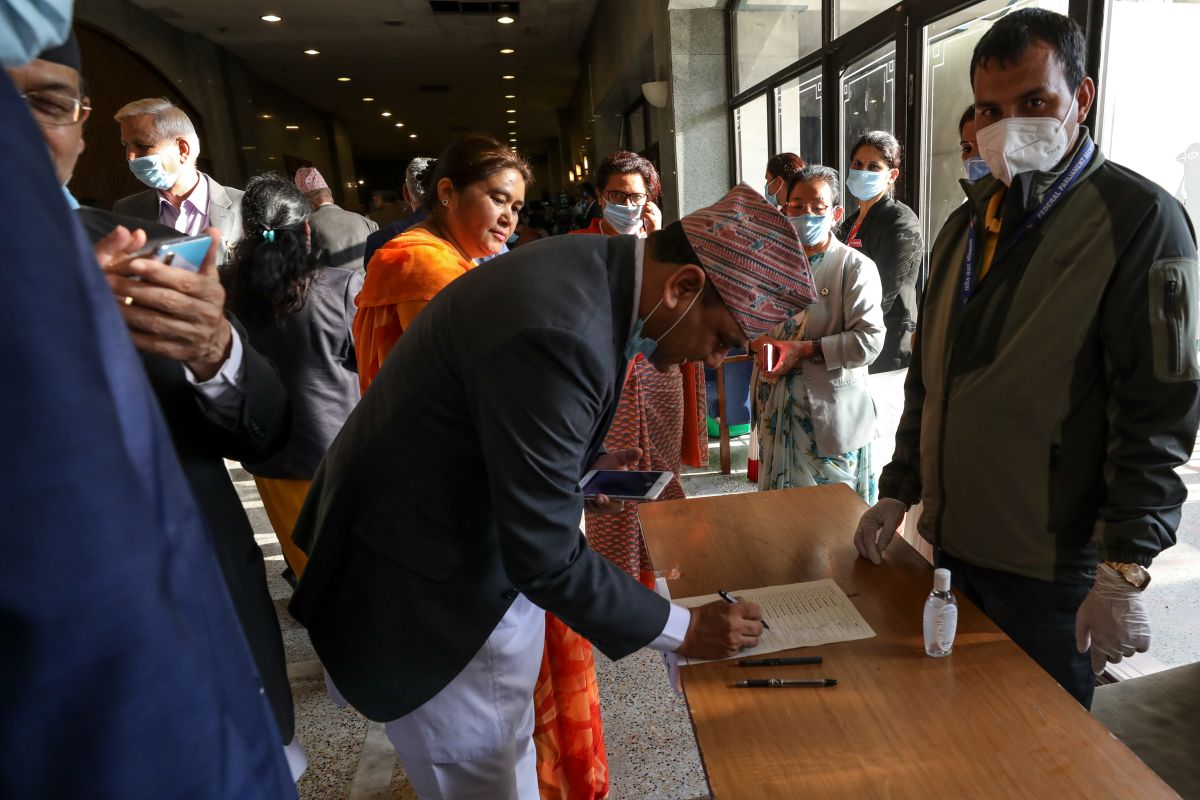Nepal Policy
India’s relationship with Nepal has always been complex, shaped by historical, cultural, and geographical factors.
Thirdly, there are a number of contentious issues that could be put on the table for negotiations including the 1950 treaty.

Nepal's House of Representatives members sign as they vote on an amendment to update the national emblem with a new controversial political map in Kathmandu on June 13, 2020. (Photo by Bikash KARKI / POOL / AFP) / To go with 'NEPAL-INDIA-DIPLOMACY'
When Prime Minister Narendra Modi came to power in 2014, he undertook to improve ties with neighbours with his ‘Neighbourhood First’ policy. His first visit to Nepal was highly appreciated by both sides but in the last six years the India-Nepal relationship has been a roller coaster ride. Modi has visited Nepal four times.
Currently, relations between the two countries have touched a record low again. The latest was the territorial issue of Kalapani, a 35 sq. km area at the tri-junction of India, Nepal and China. Indian troops have been stationed there since 1962. It was the late King Mahendra who had handed over the territory to India in 1962 in the wake of the India- China war.
Advertisement
Kalapani is important because of its strategic location as it helps India track Chinese movements on the border. It is also a trading route between India and China. While New Delhi considers it to be part of Pithoragarh district of Uttarakhand, Nepal claims that the area is a part of Darchula district.
Advertisement
The Ministry of External Affairs terates that the issue should be settled based on old records, documents and survey reports. Meanwhile Kathmandu took matters to a new pitch when the Union Home Ministry released a revised map of India on 2 November 2019, following the bifurcation of the erstwhile state of Jammu and Kashmir on 5 August 2019.
This map showed that Pakistan-occupied Kashmir as part of the newly created Union Territory of Jammu and Kashmir while Gilgit-Baltistan was shown in the Union Territory of Ladakh. Kathmandu objected to the new map but things reached a high when Defence Minister Rajnath Singh inaugurated by video link a road connecting India to China via Lipulekh in a part of Kalapani on May 8.
Nepal fiercely contested the inauguration of the road. Amid the row with India over the border issue, Nepal’s Parliament this week unanimously passed a Constitution Amendment Bill for a revised national emblem to include the new map incorporating three strategically important Indian areas based on the older British survey reflecting Kali river originating from Limpiyadhura in the north-west of Garbyang.
Though New Delhi offered virtual talks and Foreign Secretary-level visits, Nepal Prime Minister K.P. Sharma Oli went ahead. Rejecting the new map, Indian External Affairs Ministry spokesman Anurag Shrivastava said, “This artificial enlargement of claims is not based on historical fact or evidence and is not tenable. It is also violative of our current understanding to hold talks on outstanding boundary issues.”
Why is Nepal on this confrontational course? The beleaguered Nepal Prime Minister saw this as a god-sent opportunity as he was facing his worst domestic crisis after rivals in his party mounted a challenge to his leadership. Within the Nepal Communist Party (NCP) there was a move to impose a ‘one man, one post’ rule that would force Oli to choose between being NCP co-chair or Prime Minister.
Also, under the Nepali Constitution, a new Prime Minister enjoys a guaranteed two-year period during which a noconfidence motion is not permitted. He took over in February 2018. His inept handling of the Covid-19 pandemic added to the growing disenchantment. Secondly, Oli must have chosen this time when there are border skirmishes between India and China. He is known for his leftist leanings and his friendship with the Chinese.
As some experts in India claim, there could be a Chinese angle in the timing of the Nepal Parliament move. However, Oli seems to be open to dialogue. He told the media after Parliament passed the bill: “The first course is now over. And now dialogue with India will be the next course. I am happy about this unprecedented unity.” Nepal experts agree that the solution lies in dialogue and not confrontation as the time has come to reset India-Nepal ties.
First of all, New Delhi should abandon its big brother attitude and show magnanimity. Secondly, the Hindu heritage and shared history arguments are not working with Nepal as anti-India feelings are growing. Thirdly, there are a number of contentious issues that could be put on the table for negotiations including the 1950 treaty.
Fourthly, New Delhi has to learn to live with Nepal’s dependence on China. South Block should work towards improving ties with Kathmandu and counter the Chinese influence. Above all there is a trust deficit, which needs to be bridged. Kathmandu has many other grievances but the foundation still remains strong.
Rajnath Singh on June 14 said India’s ties with Nepal are “not ordinary” and that “no power in the world” can break their relationship, and that the Centre wants to sort out its misunderstanding through dialogue.” This would be the right approach towards a smaller neighbour.
Advertisement